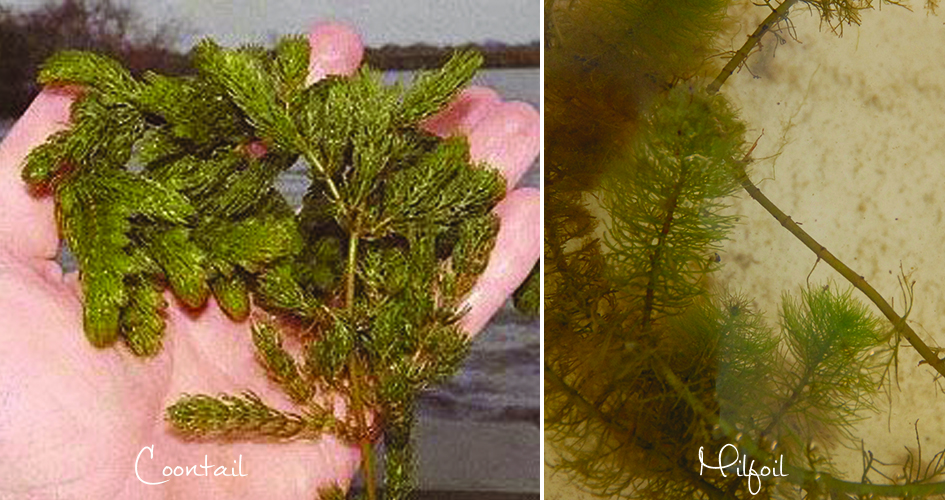Pond Problems- Coontail
Coontail is a common native freshwater plant that stays completely submersed. Coontail is one of the only pants that can pollinate completely under water. This plant is free floating, but the leaf structure will modify to allow the plant to attach to the pond floor, which makes the plant appear rooted. Its common name comes from the bottle-brush shaped growth. This plant is often misidentified as milfoil; however, milfoil leaves are feather like and coontail leaves are rigid.

Because Coontail is a native freshwater plant it isn’t a terrible addition to your pond, however if it becomes too thick the growth becomes a pond problem. Coontail can become so thick that it stunts fish and inhibits recreational activities like fishing, swimming and boating. Here are some recommendations to control coontail if the pond weed turns into a pond problem.
Coontail is best treated in water temperatures above 60°F. For prevention of coontail we recommend high doses of pond dye and pond bacteria. The only manual removal option we recommend is raking. Because the plant reproduces by seeds and fragmentation, cutting only spreads the coontail. If the problem is excessive you will need to use aquatic grade herbicides to get the growth under control. For a 1 acre pond you will use 1 gallon of Tsunami DQ and 1 Gallon of Crystal Plex mixed together. If the 2 gallon mixture will not spread far enough to cover all of your growth add a couple gallons of water. The water is not a diluter it is simply helping you spread the product. Spray in areas with growth. Depending on severity of growth an additional application may be needed 7 days later.
For more information on how to solve your pond problems contact Sanco.
